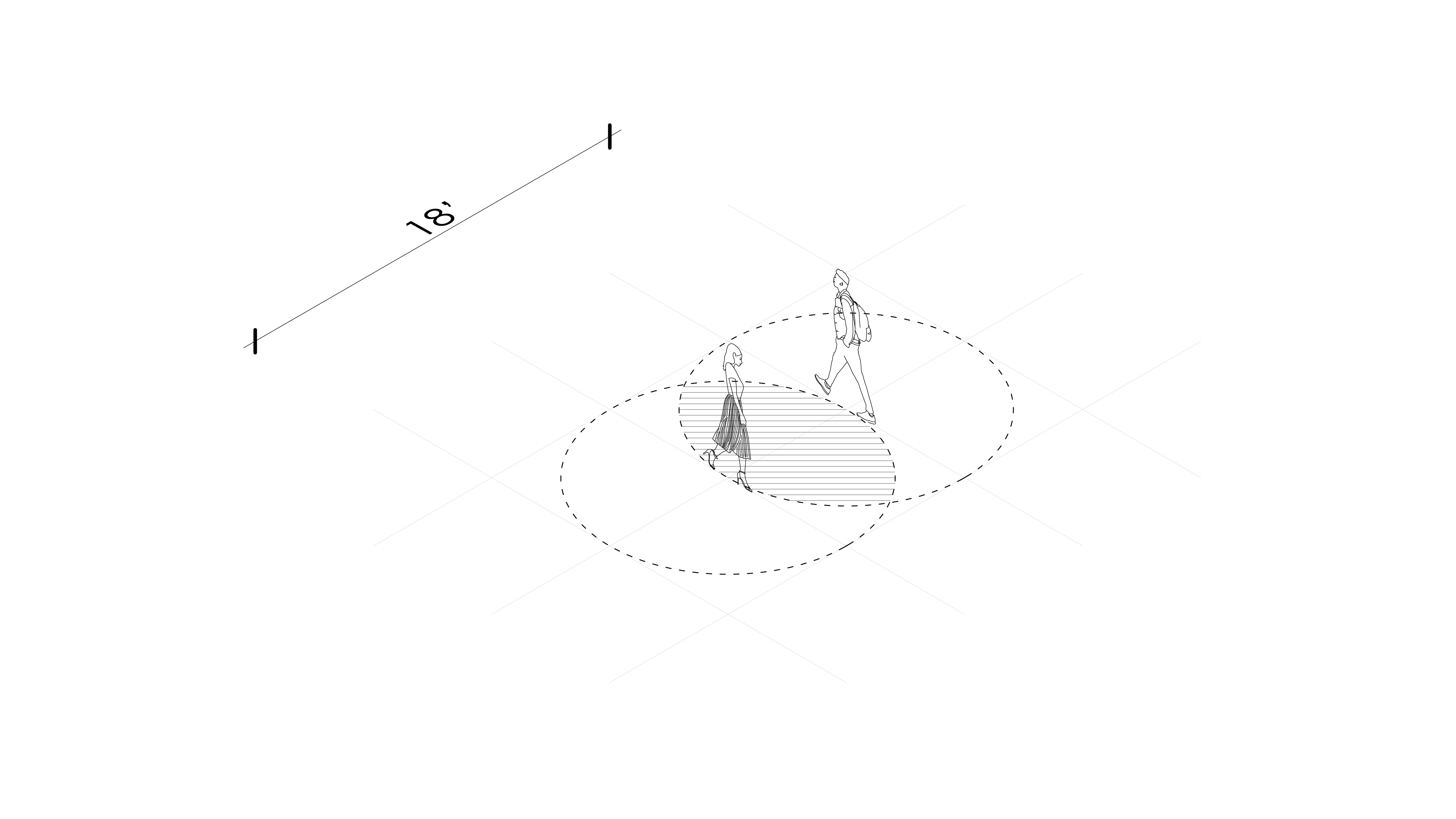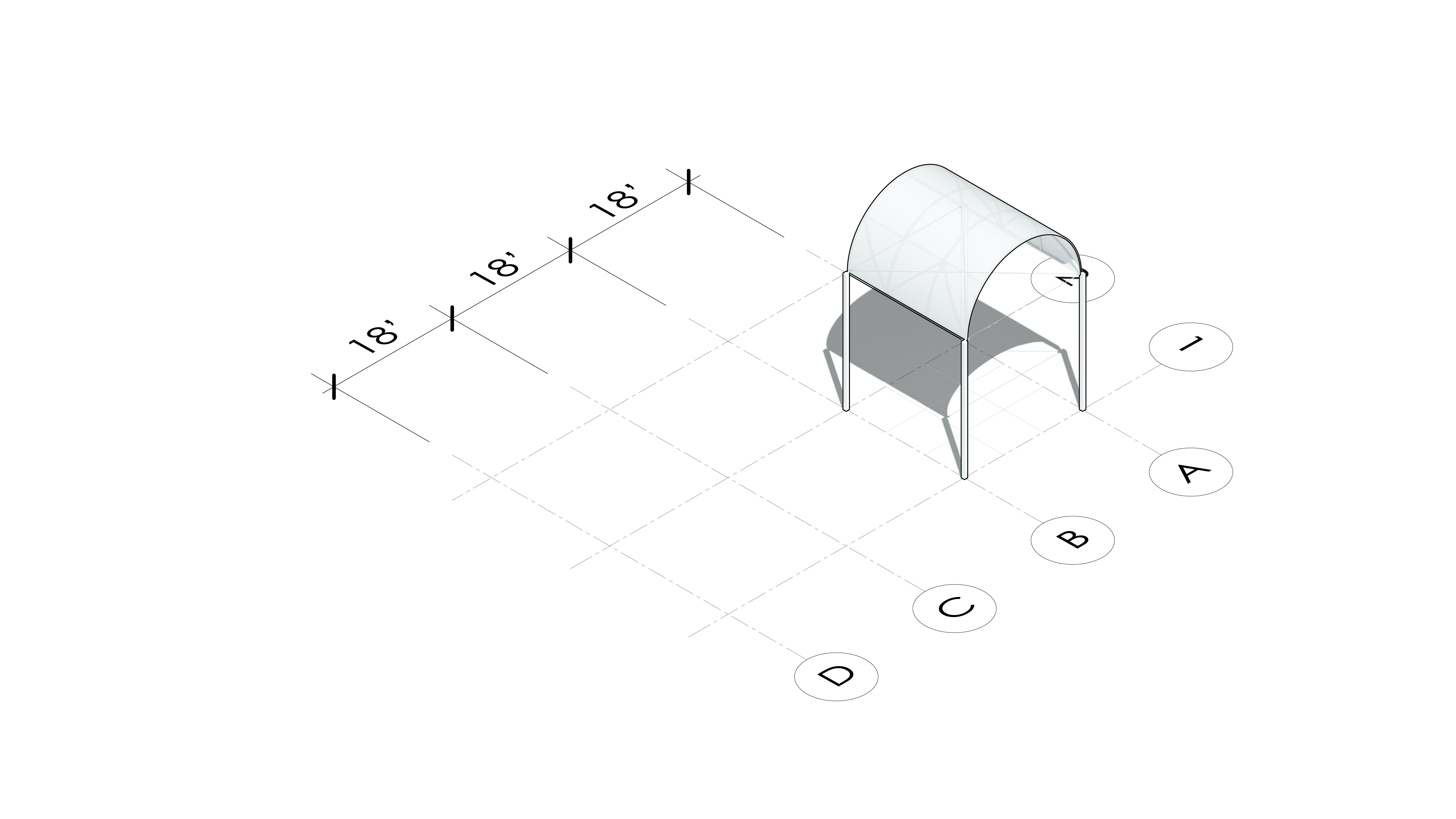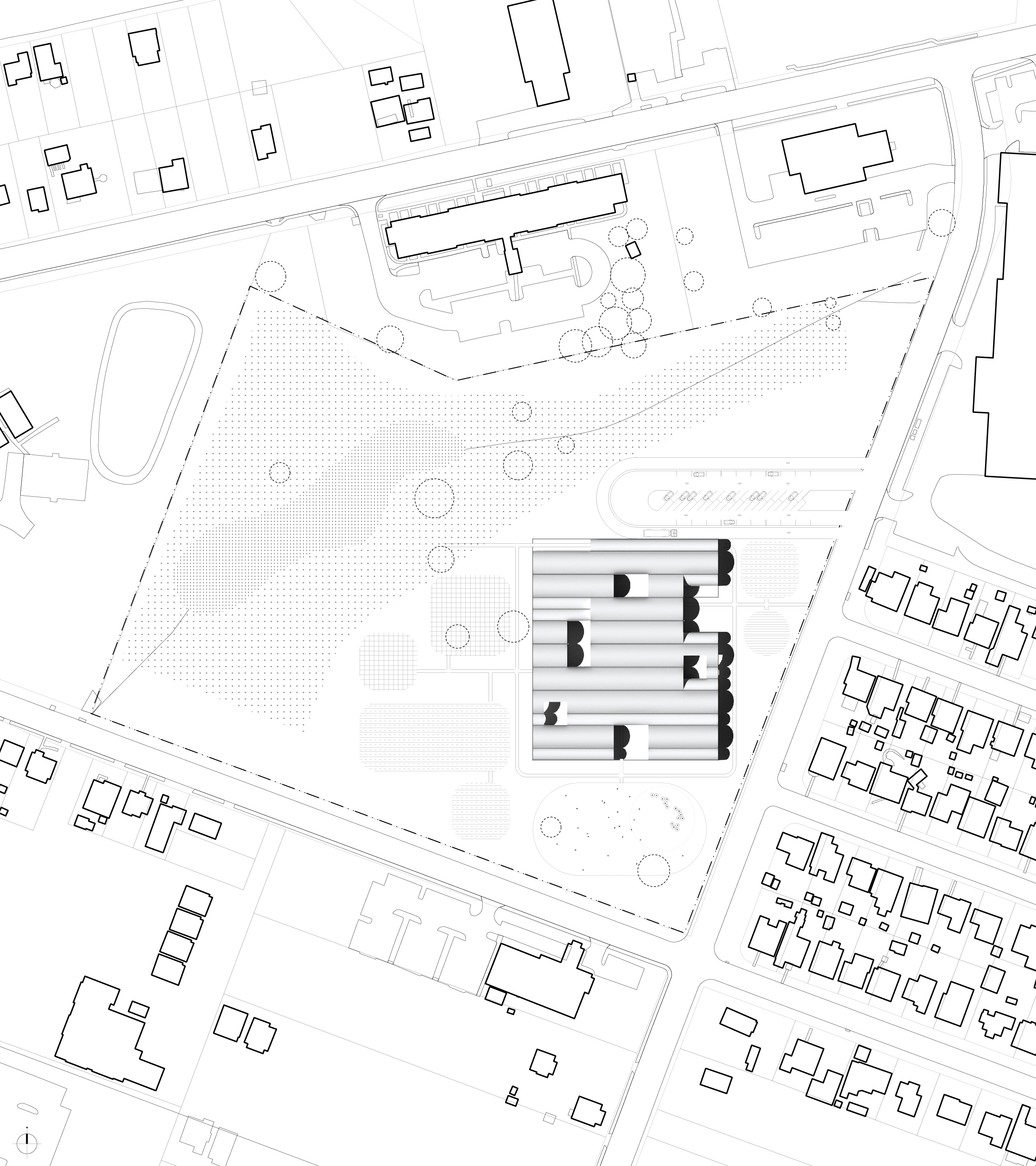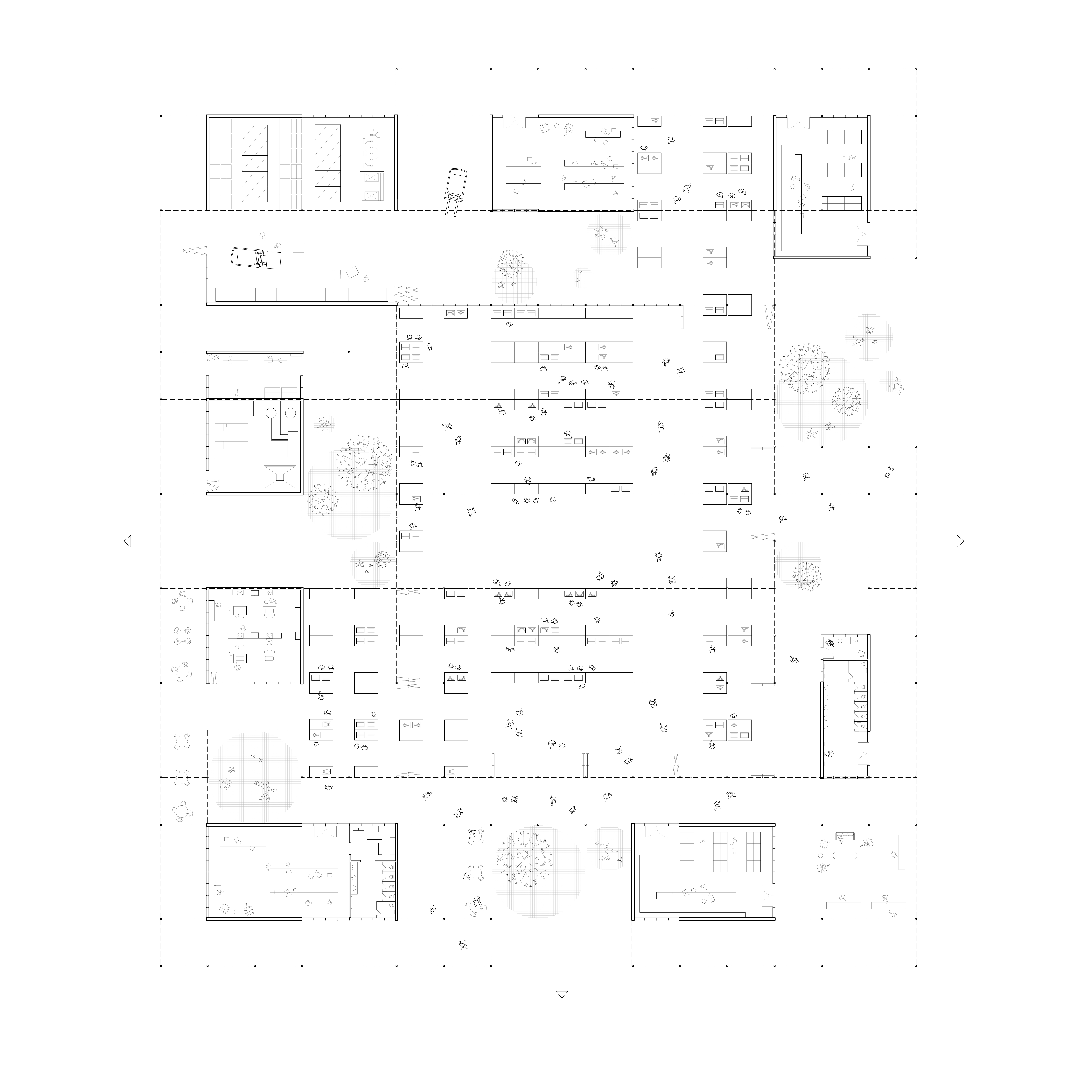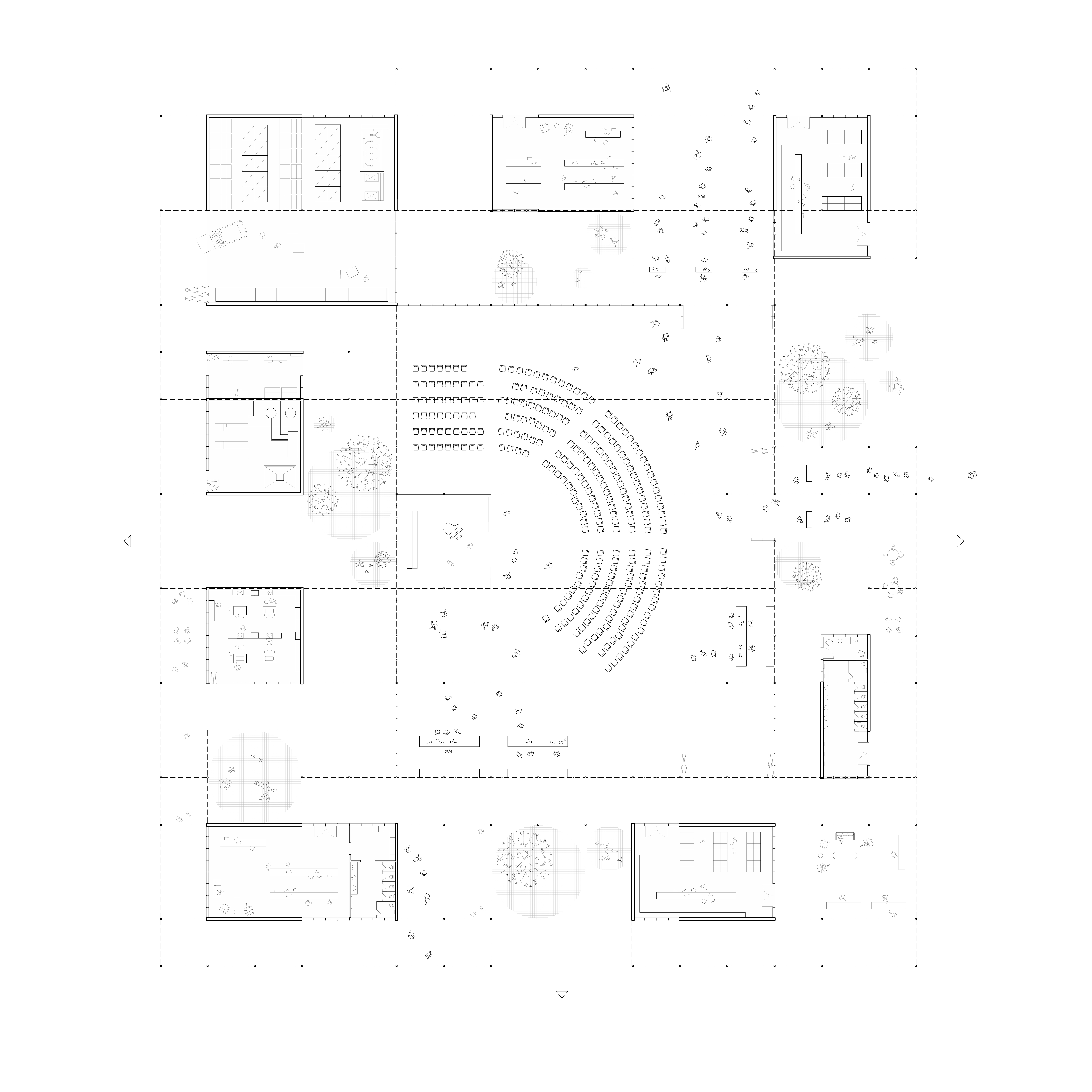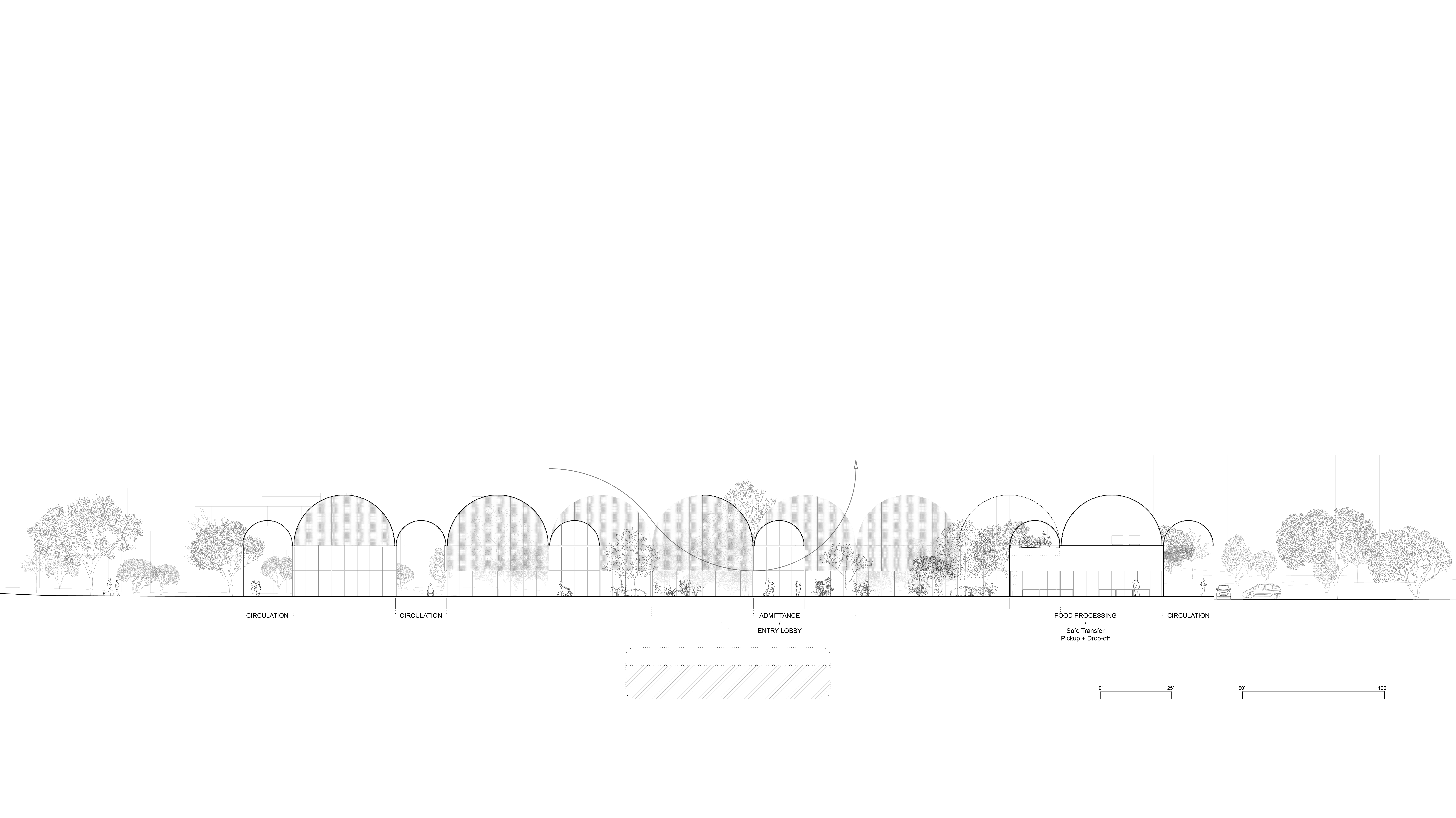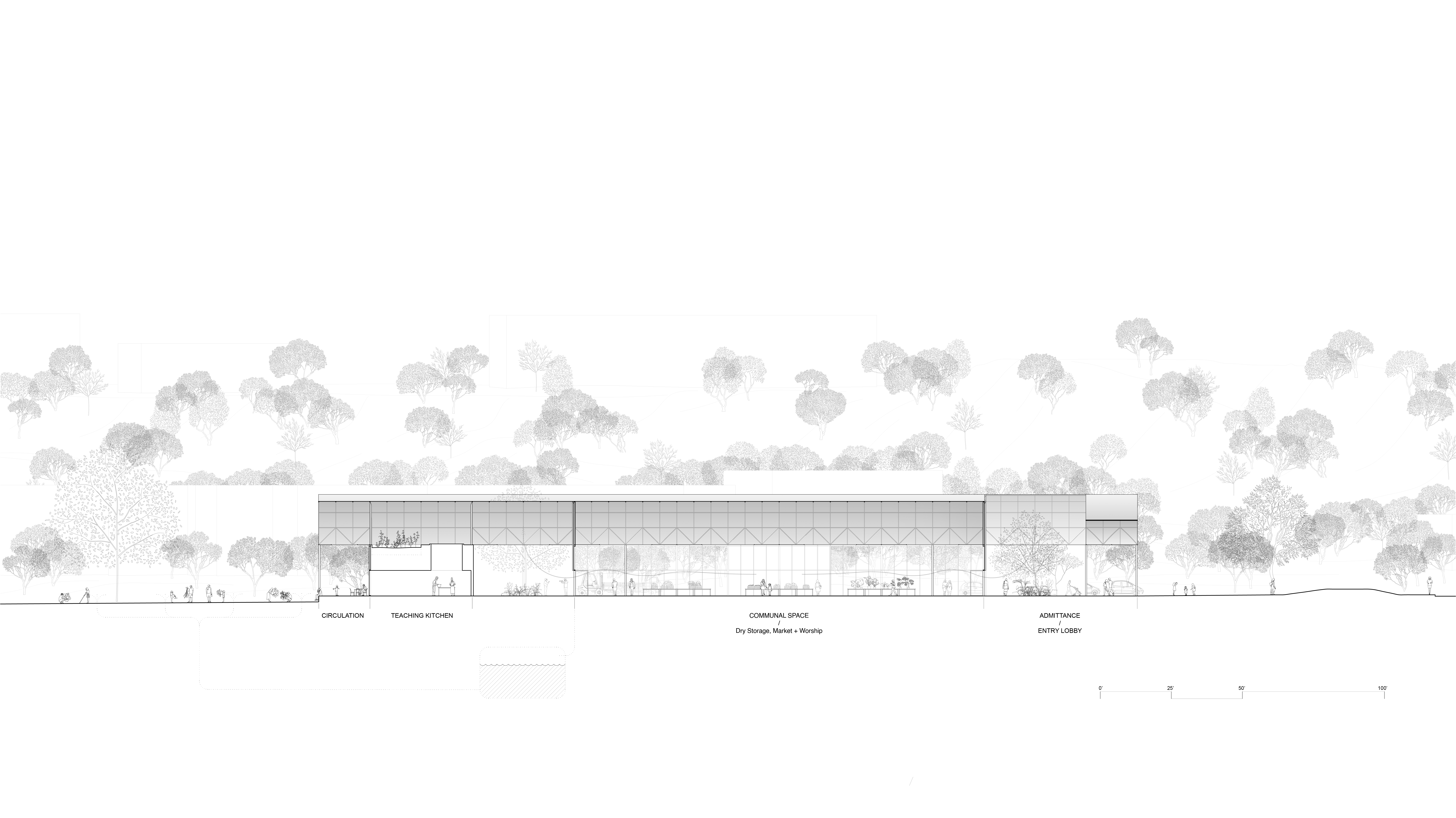Force-Majeure

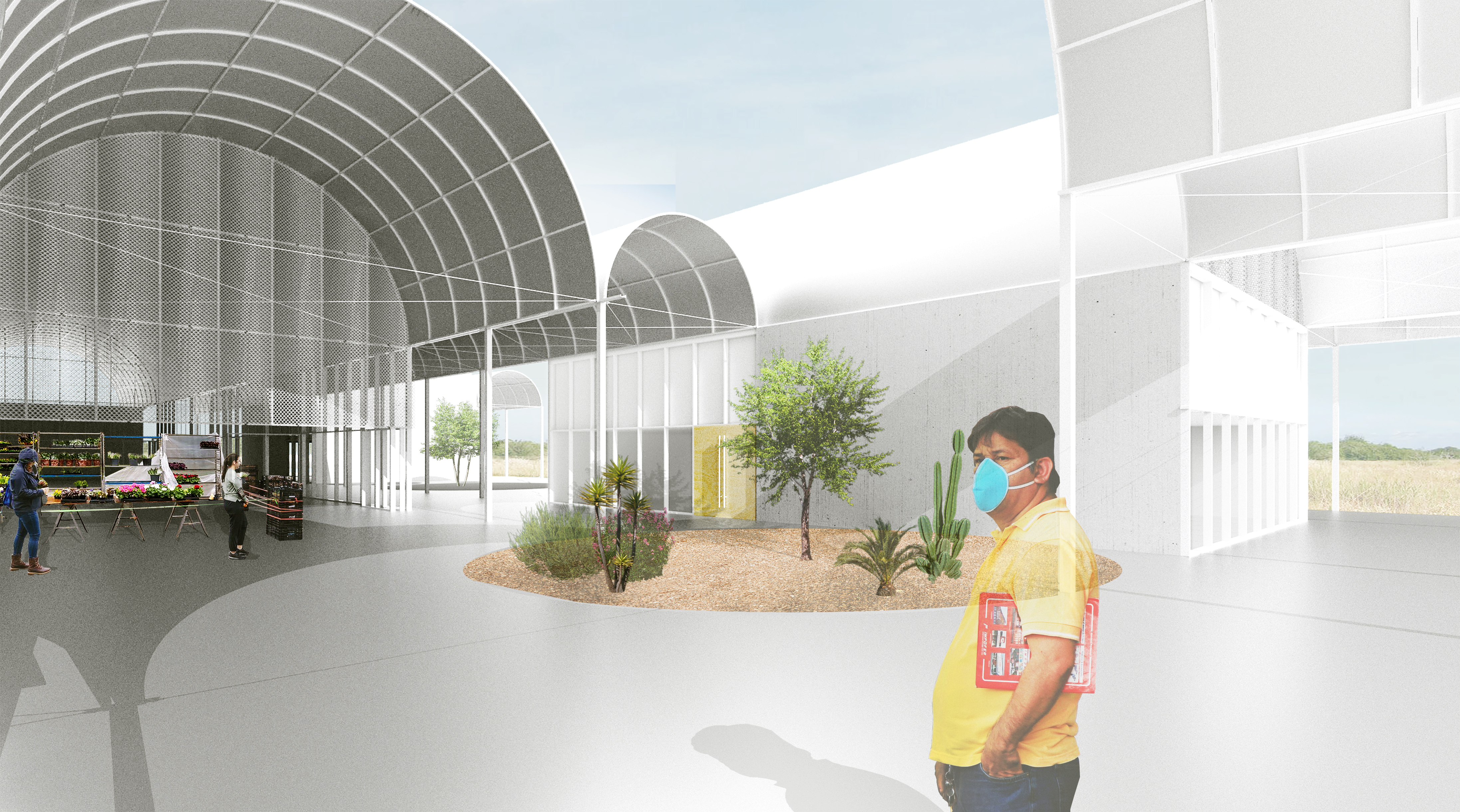

Info AIA Austin Annual Ideas Competition
Team Juan Acosta, Italia Aguilera, Gable Bostic, Stefan Brits
Date 2020
Entry Video
Good Grazing
The COVID-19 pandemic exacerbates extant health and economic disparities that disadvantage minorities in the United States, compromising health, living environments, access to nutrition, and educational resources. The crisis also reveals supply chain deficiencies in which goods and services were initially scarce and difficult to transport, leaving such communities especially vulnerable. When nonessential businesses closed, farmers who had already harvested their crops could not find new buyers before their perishable product rotted. Additionally, the American Farm Bureau Federation estimates that only about eight percent of farms in the United States supply food locally. While there is enough food available, it is not reaching those that need it most.

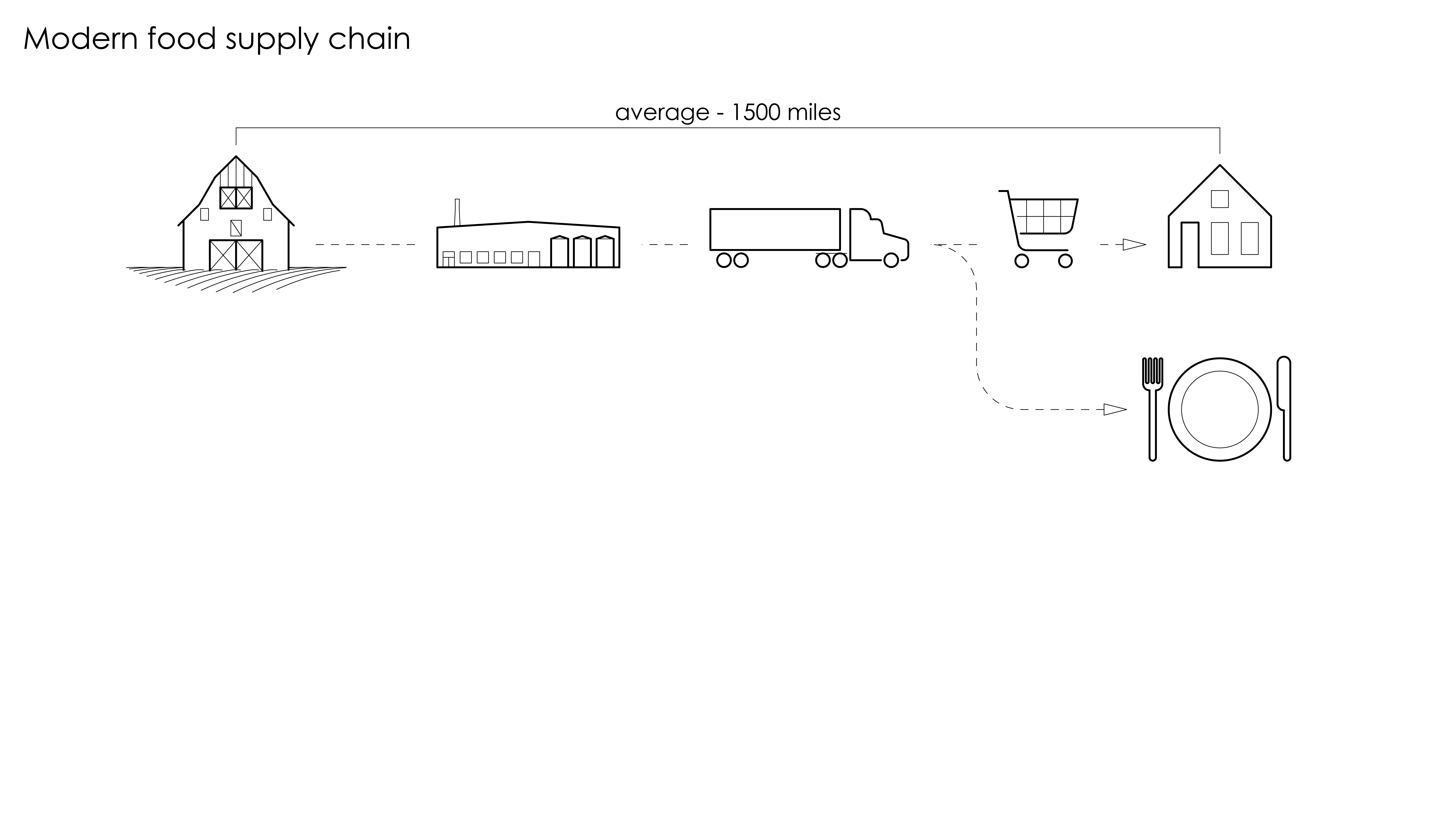
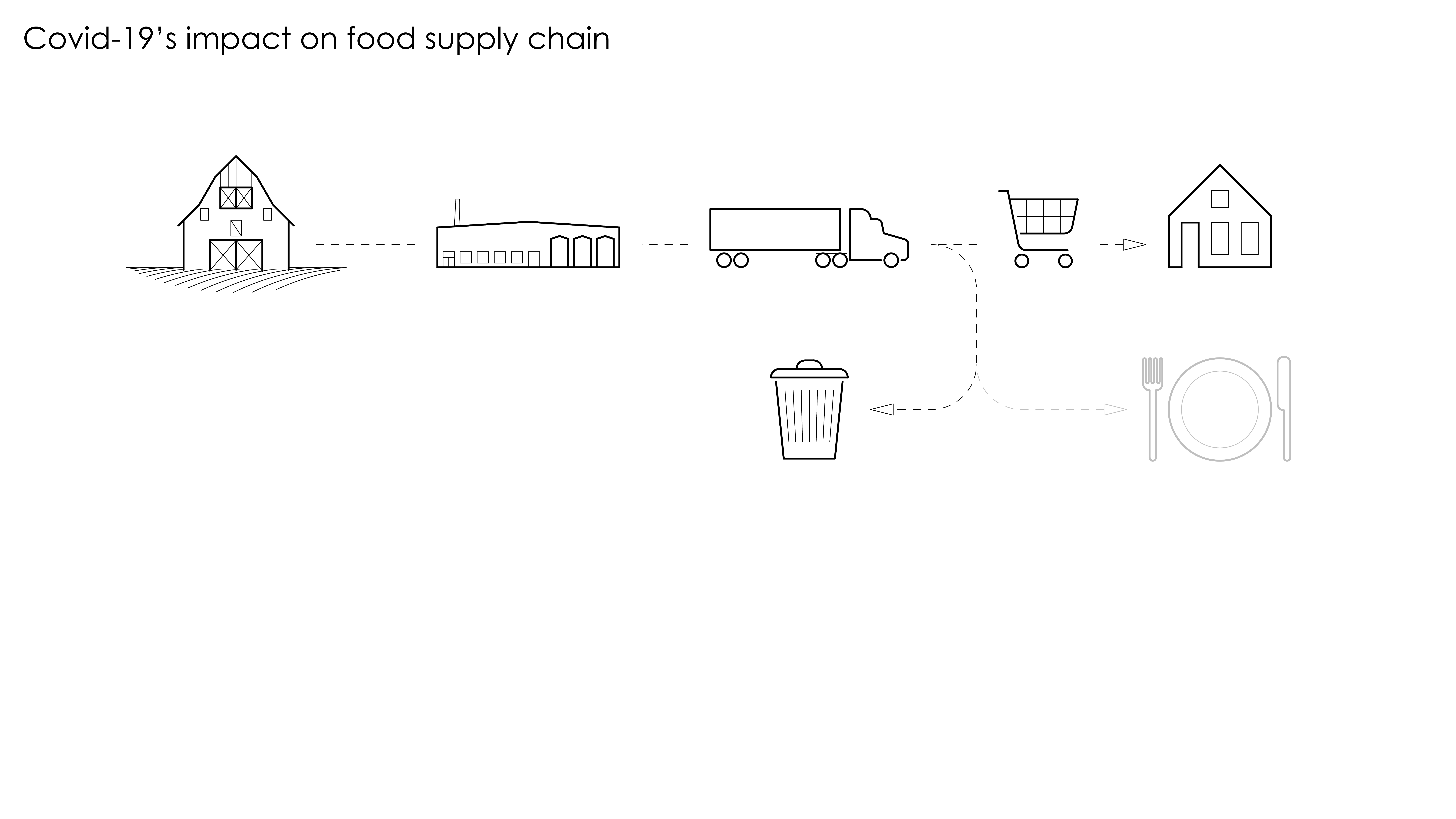



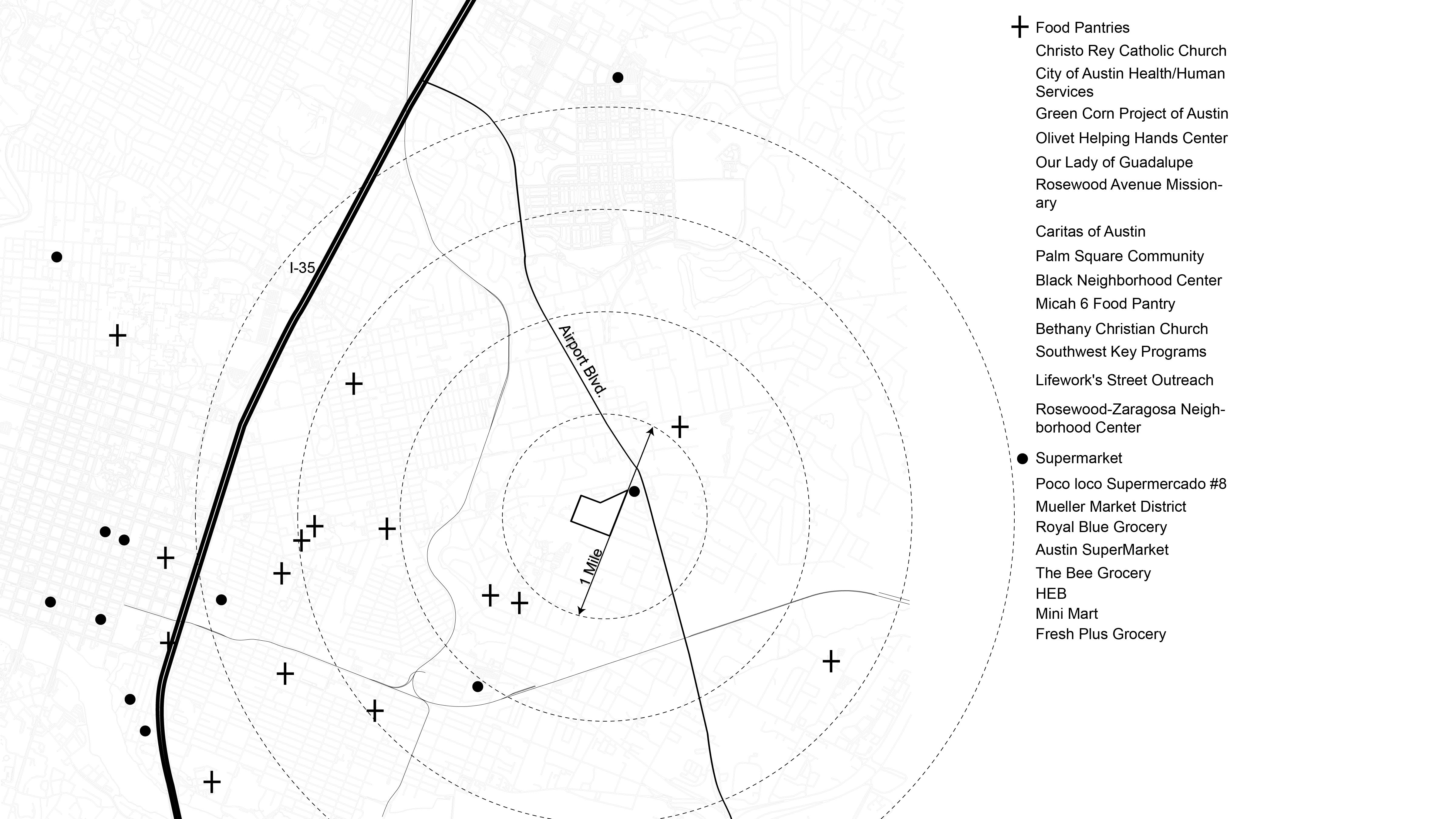


A quotidian building strategy of corrugated metal barrel vaults alludes to the project’s pastoral aspirations. Inspired by the Mexican tianguis and state-sponsored fixed markets, this approach legitimizes informal economies via a hybrid function as market and demonstrative farm where visitors of all ages develop an understanding of agriculture, food production, and land stewardship. The project is organized around a flexible community hall with rings of complimentary programs, infrastructure, and circulation circumscribing it. A network of these highly localized food production and distribution centers can easily shift from distributing food and culture to other essential resources.

